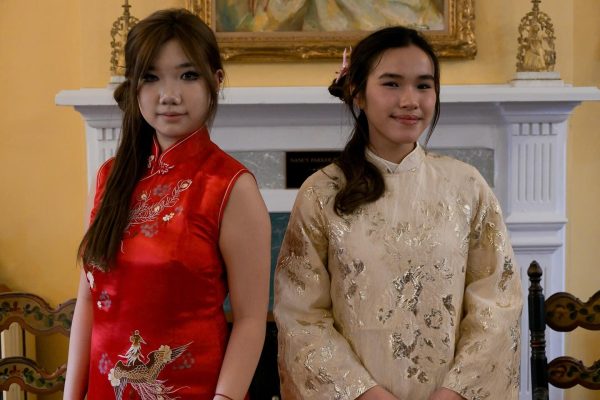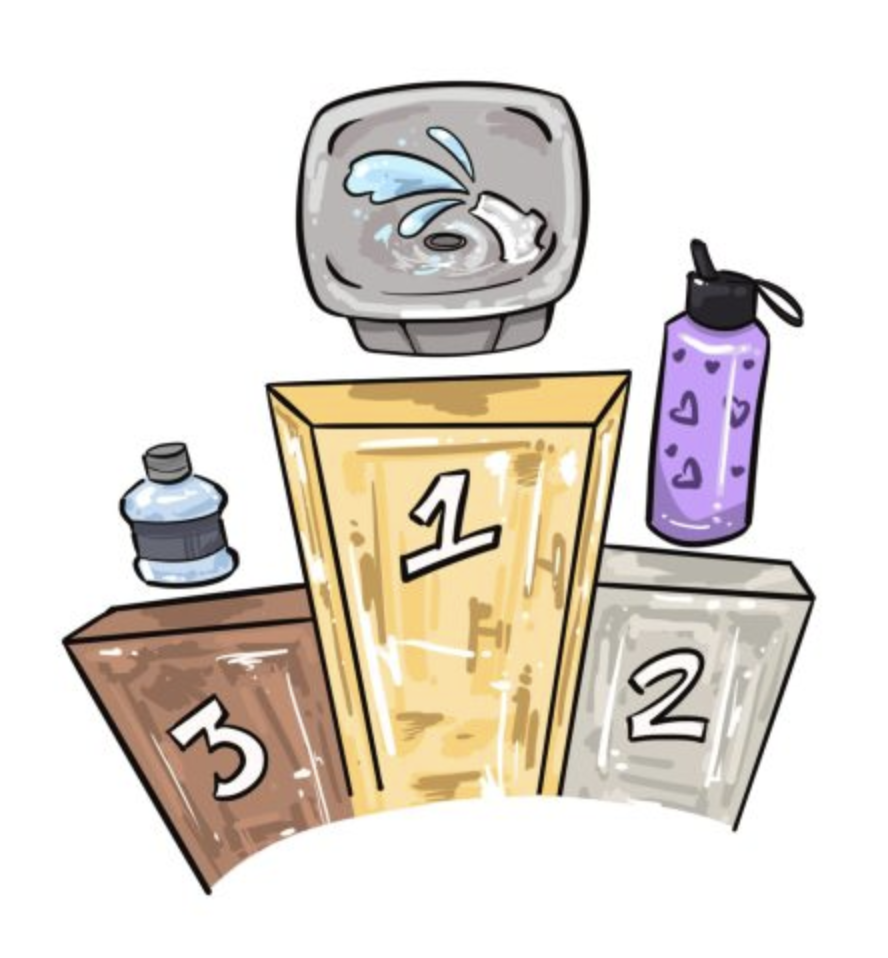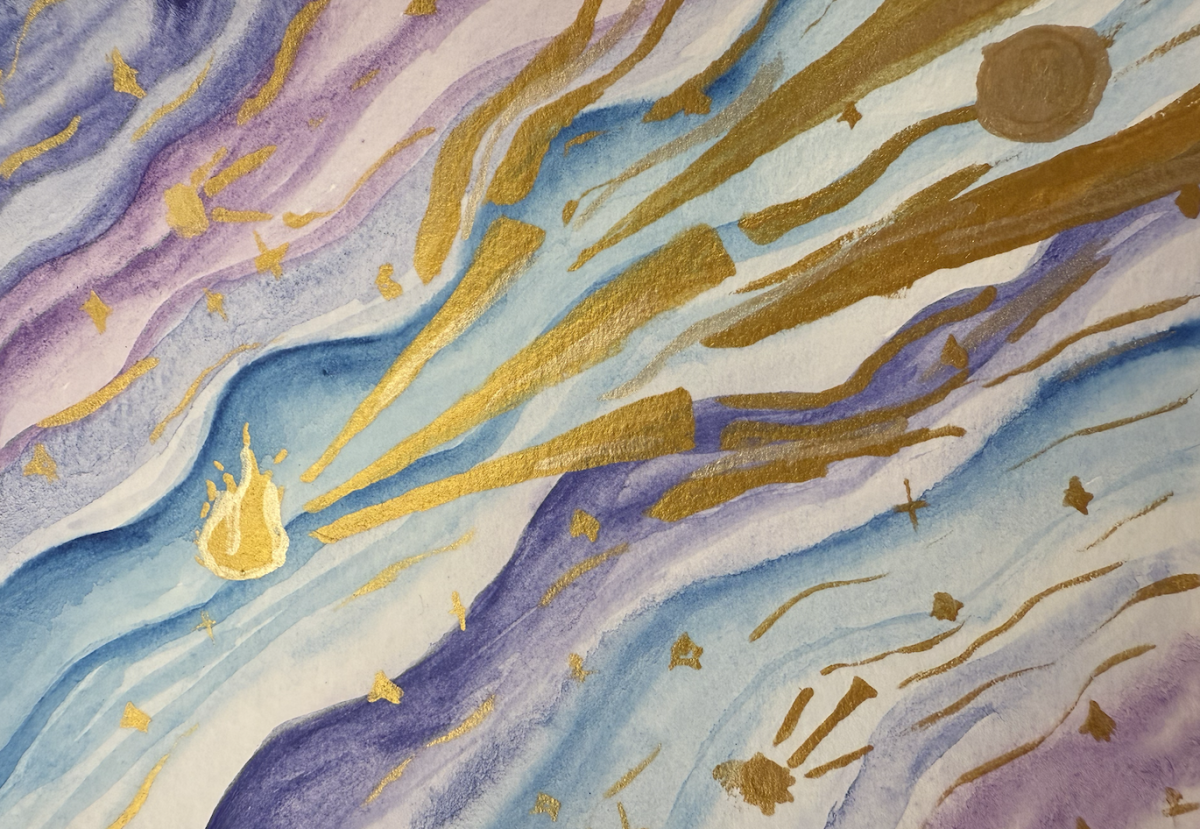Lunar New Year, a celebration of the new year on the lunisolar calendar (a combination of the lunar cycle and the solar year), is one of the biggest traditions for Asian countries. At the end of January, the Grier School community celebrated in our own way. Students and faculty gathered for the day, hung some customary ornaments around campus, made dumplings while listening to fun music in Wren’s Nest, and had traditional New Year’s snacks in the living room.
We wanted to investigate more into how Lunar New Year is celebrated around the world, so we asked the experts–our Grier students.

In Vietnam, people generally celebrate Lunar New Year by visiting temples, lighting lanterns, and enjoying traditional food. “I gather with my big family and cook some dishes for our ancestors, said senior Annie Nguyen. “On the eve of Lunar New Year, we watch fireworks, drink wine (which I don’t), and listen to songs.”
Nguyen described one of the traditional dishes eaten in Vietnam on Lunar New Year. “We have a special cake called ‘bánh chưng,’” she said. “The main part of the cake stands for land, and the surrounding part symbolizes the sky. There’s also the dish “bánh tét.”
Nguyen also emphasized that the lively atmosphere is important in Vietnam on Lunar New Year. They hold flower markets, where a variety of flowers can be sold. Family members will share “lí xí,” or “lucky money,” which are small amounts of money in red envelopes that are often given to children. These are meant to wish the receiver good luck. Nguyen recalled one of her favorite memories from Lunar New Year, saying, “Once, my family traveled to different cities in Vietnam all together, and it was so much fun!”
In China, there is a similar tradition involving red envelopes. One common practice is “handing a red envelope called hongbao (红包), which includes money,” eighth grader Kyra Xia said when describing how Chinese people celebrate their Lunar New Year. Like in Vietnam, these envelopes are often given to children as part of family celebrations.
Another aspect of the New Year celebrations is the food. “People in China eat a big meal with their whole family,” Xia explained. The most common food is usually dumplings, which are eaten while they watch a variety show called chunwan (春晚). Chunwan is a variety show with a countdown to midnight where many people set off fireworks, similar to the Times Square Ball Drop in New York. “We usually don’t sleep when it’s Lunar New Year, commemorating the day by saying ‘xinniankuaile (新年快乐),” Xia said. That translates to the seemingly global phrase “Happy New Year.”

In the Korean Lunar New Year, they celebrate with traditional outfits, food, and activities. “We eat tteokguk (떡국), which is a traditional soup with rice cake in Korea for celebrating that we turn one year older,” senior Seoyoung Yang said. In Korea, they have both a cultural age, referred to as Korean age, and an international age. In the Korean age, everyone is counted as one-year-old at birth, and everyone turns a year older on the Lunar New Year.
Yang also discussed the kind of clothing they wear. “We wear hanbok (한복),” she explained, “which is traditional clothing during Lunar New Year, which has diverse rainbow colors.” Hanbok is usually only worn on special occasions, like weddings, birthdays, and New Year’s celebrations.
The elders will also gift children with money, sebaetdon (세뱃돈). While similar in theory, these differ from the ones used in Vietnam and China since the money is kept in colorful cloth bags instead of red envelopes.
Yang shared one of the common games played during Lunar New Year. “For activity, we do yutnori (윷놀이) (yutnori),” Yang said, “which is a customary board game we play for fun with two teams.” Yutnori involves sticks and tokens, and is often played by many families.
While not everyone celebrates Lunar New Year, it was definitely a meaningful holiday at Grier where students were able to learn about a new culture while exchanging a simple New Year’s greeting. The snowed-in surroundings of Grier did not put a damper on the celebration in the least. It turns out that a warm greeting of Happy New Year can be the hearth that will help us end the cold and bitter winter with joy and friendship.







